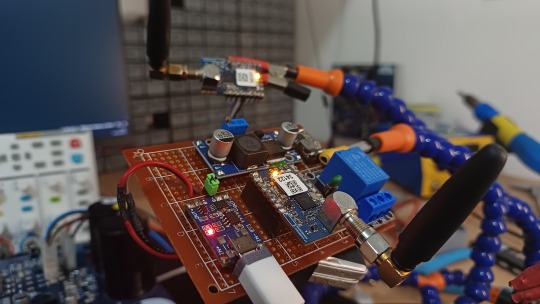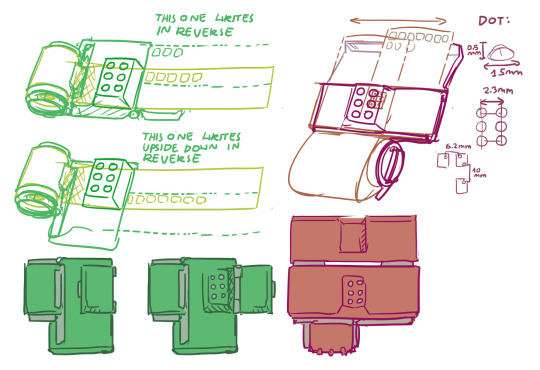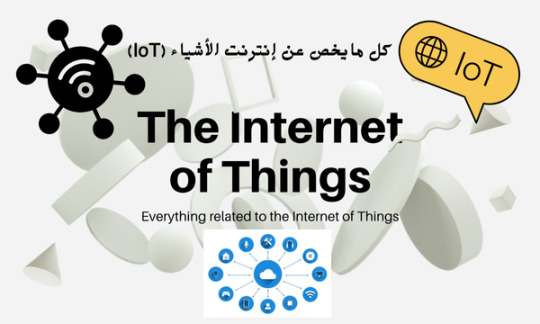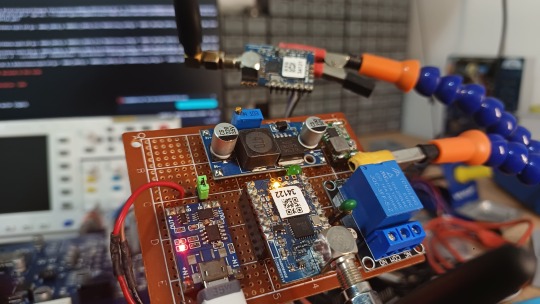#Arduino vs Raspberry Pi
Explore tagged Tumblr posts
Text
GPIOs do LoRaMesh da Radioenge: Portas digitais
Aprenda como usar as GPIOs do módulo LoRaMesh da Radioenge
As GPIOs do LoRaMesh da Radioenge possibilita que possamos fazer aplicações de automação com um uso reduzido de hardware, dedicando apenas ao circuito de chaveamento (se necessário) e de alimentação. No total temos no LoRaMesh 8 GPIOs sendo todas configuráveis como entrada ou saída digital e duas como leitura analógica. Porém neste post vamos apenas abordar as portas digitais. Por qual motivo…

View On WordPress
#lora mesh arduino#lora mesh chat#lora mesh device#lora mesh library#lora mesh module#lora mesh network#lora mesh network raspberry pi#lora mesh protocol#lora mesh radio#lora mesh range#lora vs lorawan#loramesh#lorawan#lorawan devices#lorawan gateway#lorawan network#mesh lora
0 notes
Text

Please Reblog, I'd like to design a cheap braille typewriter (prototyping by 3d printing, final design will be machined) I stumbled upon linked YouTube short and a thought: "designing 6/8 button typewriter is within my technical capabilities"
youtube
I have many design questions I wish I could test out
My roadblock is I don't know anyone who's visually impaired, and casually seeking random place to peddle my soon-to-be-invention is not something I'm capable of
Many design questions:
Paper type: what is minimal quality/density of paper for dots to be readable. Can thermal receipt paper be used for notes?
Embossed vs punched out: is that significant for the typewriter to not break paper? It's important for "undo", but that's pretty far in my building a typewriter plan
Typewriter size: My initial idea was something like a portable cash register with receipt paper spool and little tray for it to glide along (I quickly realized it's a bad design because it can't fit more than 7 characters, or I can make infinite scroll of a single line with questionable ergonomics). Ultimately is related to page size, so what would be best for it? A4 standard paper? Is being portable important?
Keyboard layout: Perkins Brallier have all it's buttons inline forming long row. Wouldn't single-hand keyboard in similar layout as braille dots be more convenient? (straight grid or mimicking angle of computer keyboard letters)
Typing feedback: should typed letter be instantly accessible and not obstructed by typewriter? Maybe typing with one hand and instantly proof-reading with another hand?
Typewriter or printer?: alternatively, I can make a little annoying-noise-making servo-powered printer that will punch out text. Arduino or Raspberry PI based (I have experience with both) It would be USB powered most benevolent printer, because it don't require ink to work
Thanks for reading! [I'm not transcribing my design scribble, because it's absolute dogshit, but it helped me formula requirements. I will add transcription to actually thought of designs]
Alternatively, if I'm tweaking right now and if that thing would be needed it would already exist, I'll go back to trying to get hired by random megacorp and that's the last time you hear of me talking about it 💀
#braille#accessibility#inclusivity#blindness#blind#visually impaired#actually blind#low vision#visual impairment#Youtube
65 notes
·
View notes
Text
NINE PEOPLE I WANNA GET TO KNOW BETTER
Thanks @lyralu91 and @morning-alfie for the tags! 🎀
LAST SONG? : Cherry Waves - Deftones
FAVOURITE COLOUR? : Purple 💜
CURRENTLY WATCHING? : The Rookie
LAST MOVIE? : Humboldt County
SWEET/SPICY/SAVOURY? : All of them
CURRENT OBSESSIONS? : Firearm mechanics, Excel speedruns, bass guitar covers
LAST THING YOU GOOGLED? : "arduino vs raspberry pi reddit"
People I'm tagging to get to know better:
❤️ @potter-solomons @wooood1 @miuyrr @zablife @mollybegger-blog @leenieweenie12 @kiss-me-hardy @soaps-mohawk @hecatemoon87 ❤️
25 notes
·
View notes
Video
youtube
Birazda Teknik Çalışalım🙂Pır Sensör ve SSR Röle ile 220V Tetikleme
Bugün PIR hareket sensörü ve SSR (Katı Hal Rölesi) kullanarak 220V tetikleme nasıl yapılır? konusuna teknik olarak yaklaşıyoruz! ⚙️🔌 PIR sensör hareket algıladığında SSR röleyi tetikleyerek yüksek voltajlı cihazları güvenli bir şekilde nasıl kontrol edebileceğinizi adım adım anlatıyorum. 💡🔦 📌 Bu projede neler var? ✅ PIR Sensör: Hareket algılama prensibi 🕵️♂️ ✅ SSR Röle: Katı hal rölesinin avantajları ve kullanımı 🔌 ✅ 220V yük kontrolü: Güvenli devre tasarımı ⚡ ✅ Pratik devre şeması ve uygulama 🛠️ ⚠️ 220V ile çalışırken güvenlik önlemlerine dikkat edin! 📢 Bu tarz teknik içerikler hoşunuza gidiyorsa yorum yapmayı ve abone olmayı unutmayın! 🛠️🔔 👉 Beni takip etmeyi unutmayın! 📌 TikTok: @drmusatokmak 📌 Instagram: @drmusatokmak 📌 Twitter: @drmusatokmak 📌 Web sitem: http://bit.ly/drmusatokmak Anahtar Kelimeler: PIR sensör, hareket sensörü, SSR röle, katı hal rölesi, 220V tetikleme, otomatik ışık kontrolü, hareket algılama devresi, elektronik devreler, AC yük kontrolü, transistör ile anahtarlama, röle tetikleme, elektrik güvenliği, endüstriyel otomasyon, Arduino PIR sensör, akıllı ev sistemleri, IoT projeleri, güç elektroniği, röle bağlantısı, sensörlü devreler, ev otomasyonu, mikrodenetleyici projeleri, aydınlatma otomasyonu, DIY elektronik, otomasyon sistemleri, elektrikli cihaz kontrolü, SSR vs mekanik röle, hassas hareket algılama, AC devre kontrolü, hareket algılamalı sistemler, 220V ile çalışan projeler, elektronik devre şemaları, enerji tasarrufu devreleri, akıllı ışık sistemleri, röle modülü, DIY otomasyon, Raspberry Pi röle kontrolü, yüksek voltaj anahtarlama, elektrik mühendisliği, akıllı sistemler, elektronik bileşenler, güvenlik sistemleri, elektrikli ev sistemleri, LED aydınlatma kontrolü, 220V elektronik devreleri, ev güvenlik projeleri, akıllı cihaz projeleri, röle ile yük kontrolü, hobi elektroniği, güç kaynağı kontrolü, röle sürme devresi, elektrik projeleri, basit elektronik devreler Transcript
0 notes
Text
The comprehensive guide to the Internet of Things and remote control

The Comprehensive Guide to the Internet of Things and Remote Control
Table of Contents Chapter 1: Introduction to the Internet of Things (IoT) Definition of the Internet of Things. The evolution of the concept of the Internet of Things. How does the Internet of Things work? IoT applications in daily life. Chapter 2: Components of the Internet of Things Smart devices (sensors, actuators, and controllers). Communication and networking in the Internet of Things (Wi-Fi, Bluetooth, LoRa, 5G). Software and cloud platforms (artificial intelligence and data analysis). Protocols used in the Internet of Things (MQTT, CoAP). Chapter 3: Communication technologies in the Internet of Things Overview of communication technologies. The difference between local and wide area networks (LAN vs WAN). Low-power communication networks (LPWAN). Challenges of communication and reliability in the Internet of Things. Chapter 4: Smart home automation using the Internet of Things Definition of the smart home. Smart home appliances (smart lights, smart locks, thermostats). Virtual assistant systems (such as Alexa and Google Assistant). Smart home security and monitoring solutions. Chapter 5: Internet of Things in industrial sectors Smart manufacturing (predictive maintenance, smart robots). Smart agriculture (agricultural sensors, smart irrigation systems). Smart cities (traffic management, smart ecosystems). Smart healthcare (remote monitoring, wearable devices). Chapter 6: Security and privacy in the Internet of Things Potential security risks in the Internet of Things. Privacy and data protection challenges. Security protocols and technologies (encryption, identity management). How to address security threats in smart systems. Chapter 7: Artificial intelligence and the Internet of Things How does artificial intelligence complement the Internet of Things? Predictive analysis and intelligent decision making. Machine learning applications in the Internet of Things. Examples of artificial intelligence in smart systems. Chapter 8: The future of the Internet of Things Future market developments and trends. 5G Internet of Things and its role in supporting developments. Future challenges and new opportunities. How will the Internet of Things change our daily lives? Chapter 9: Examples and Case Studies Practical examples of the use of IoT in various fields. Case studies of the most popular IoT applications (eg: Nest, Tesla, Philips Hue). Utilizing the Internet of Things to improve efficiency and productivity. Chapter 10: How to get started with the Internet of Things? Available tools and platforms for developing IoT solutions (Raspberry Pi, Arduino). Building simple projects using the Internet of Things.
#Internet of Things (IoT) guide - دليل إنترنت الأشياء#Smart home automation - أتمتة المنازل الذكية#IoT for remote control - إنترنت الأشياء للتحكم عن بعد#Connected devices - الأجهزة المتصلة#IoT applications - تطبيقات إنترنت الأشياء#Smart home technology - تقنية المنازل الذكية#Home automation solutions - حلول أتمتة المنازل#Remote monitoring - المراقبة عن بعد#IoT security - أمان إنترنت الأشياء#IoT and smart devices - إنترنت الأشياء والأجهزة الذكية#Future of IoT - مستقبل إنترنت الأشياء#Smart home gadgets - أدوات المنزل الذكي#Wireless control systems - أنظمة التحكم اللاسلكي#IoT for energy efficiency - إنترنت الأشياء لكفاءة الطاقة#IoT in everyday life - إنترنت الأشياء في الحياة اليومية
0 notes
Text
Leitura analógica do LoRaMesh da Radioenge
Aprenda como usar a leitura analógica com o módulo LoRaMesh da Radioenge
A leitura analógica com o LoRaMesh possibilita com que possamos fazer um amplo sistema de sensoriamento remoto sem precisar necessariamente de microcontrolador adicional na parte do slave. Por qual motivo usar a leitura analógica do LoRaMesh da Radioenge? Uma leitura digital em muito dos casos já é mais que o suficiente para saber se algo está ou não funcionando, mas a leitura analógica do…

View On WordPress
#lora mesh arduino#lora mesh chat#lora mesh device#lora mesh library#lora mesh module#lora mesh network#lora mesh network raspberry pi#lora mesh protocol#lora mesh radio#lora mesh range#lora vs lorawan#loramesh#lorawan#lorawan devices#lorawan gateway#lorawan network#mesh lora
0 notes
Text
0 notes
Text
Raspberry Pi for Beginners (Mac+PC)
Raspberry Pi for Beginners (Mac+PC)
WoW, I wasn’t expecting that. I just wanted to buy a Respberry Pi for my living room. But now I know what this little computer can do and I will probably get another one as a workplace – replacement. https://vimeo.com/335365626 Watch 4 of 25 lessons for free now! VIDEO #1 What can I do with a Raspberry Pi after the first start? See the true potential. VIDEO #2 Software Projects –…

View On WordPress
#arduino vs raspberry pi for beginners#arduino vs raspberry pi for robotics#getting started with raspberry pi#iot tutorial for beginners#raspberry#raspberry pi#raspberry pi (computer)#raspberry pi 3#raspberry pi 4#raspberry pi 4 projects#raspberry pi 4 setup#raspberry pi 4 tutorial for beginners#raspberry pi for beginners#raspberry pi projects#raspberry pi projects for beginners#raspberry pi tutorial#raspberry pi tutorial for beginners
0 notes
Video
youtube
Pır Sensör, NPN Transistör, SSR Röle İle 220V Tetikleme
Bu videoda PIR hareket sensörü, NPN transistör ve SSR (Katı Hal Rölesi) kullanarak nasıl 220V tetikleme yapabileceğinizi anlatıyorum! ⚙️🔌 PIR sensör sayesinde hareket algılandığında, NPN transistörümüz aracılığıyla SSR röleyi tetikleyerek yüksek voltajlı cihazları güvenli bir şekilde kontrol etmeyi öğreneceğiz. 💡🔦 📌 Bu projede neler var? ✅ PIR hareket sensörünün çalışma mantığı 🕵️♂️ ✅ NPN transistör ile sinyal kontrolü ⚡ ✅ SSR rölenin avantajları ve kullanımı 🔌 ✅ 220V elektrik devrelerinde dikkat edilmesi gerekenler ⚠️ Bu devreyi nerede kullanabilirsiniz? ✔️ Otomatik aydınlatma sistemleri 💡 ✔️ Güvenlik sistemleri ve alarm devreleri 🚨 ✔️ Hareket algılamalı otomasyon projeleri 🤖 ⚠️ 220V ile çalışırken güvenlik önlemlerine dikkat etmeyi unutmayın! 👉 Beni takip etmeyi unutmayın! 📌 TikTok: @drmusatokmak 📌 Instagram: @drmusatokmak 📌 Twitter: @drmusatokmak 📌 Web sitem: http://bit.ly/drmusatokmak 📢 Beğenmeyi, abone olmayı ve yorum yapmayı unutmayın! 🛠️🔔 Anahtar Kelimeler: PIR sensör, hareket sensörü, SSR röle, NPN transistör, 220V tetikleme, otomatik ışık kontrolü, elektrik devreleri, röle ile yük kontrolü, katı hal rölesi, hareket algılama devresi, Arduino PIR sensör, elektronik devreler, ev otomasyonu, hareket sensörlü lamba, otomasyon sistemleri, elektrikli cihaz kontrolü, röle modülü, AC yük kontrolü, mikrodenetleyici projeleri, transistör ile anahtarlama, düşük voltajdan yüksek voltaj kontrolü, röle tetikleme, elektrik güvenliği, AC devre kontrolü, hareket algılamalı sistemler, hobi elektroniği, sensörlü devreler, transistör uygulamaları, elektronik proje fikirleri, DIY elektronik, evde otomasyon projeleri, güç elektroniği, Arduino projeleri, Raspberry Pi röle kontrolü, ışık kontrol devresi, endüstriyel otomasyon, 220V ile çalışan projeler, elektrikli ev sistemleri, PIR sensör nasıl çalışır, SSR röle avantajları, hassas hareket algılama, aydınlatma otomasyonu, güvenlik sistemleri, elektrik mühendisliği, elektronik bileşenler, röle bağlantısı, mikrodenetleyiciler, AC kontrol devreleri, elektronik devre tasarımı, DIY otomasyon, elektronik komponentler, endüstriyel röleler, transistör çeşitleri, elektronik devre şemaları, yük anahtarlama, hareket dedektörü, ışık sensörleri, IoT projeleri, akıllı ev sistemleri, SSR vs mekanik röle, yüksek voltaj anahtarlama, ev güvenlik projeleri, enerji tasarrufu devreleri, akıllı ışık sistemleri, elektronik kart tasarımı, hobi projeleri, elektrikli cihaz otomasyonu
0 notes
Text
cheap books, comics and videogames!
Star Trek comics 2020 -- if you like Star Trek or even just sci-fi or comics, you need to pick this up; this is over fifty stories (most of them entire volumes rather than individual comicbooks) dedicated to Star Trek, including some awesome crossovers like Star Trek vs Transformers; Star Trek/Green Lantern, Star Trek/Planet of the Apes and more. Also, it isn’t just based on The Original Series (although there’s plenty of that) -- if your cup of tea is more like The Next Generation, Voyager, Discovery, the movie continuities and more; including Star Trek Year Five, a continuation of The Original Series. It’s an absolute must have for anybody who loves sci-fi, comics, Star Trek or just wants to pick up a good read! 50+ books for only $15 (and it comes with an add-on pack for Star Trek Online!) -- Available until February 19th
Warhammer book bundle -- eighteen fiction books based on the Warhammer lore/world (both classic and 40K) such as Horus Rising, Dark Imperium, Know No Fear, Eight Lamentations, and many more, and the best bit is… you get not only the English copy, but a French and German one thrown in for absolutely free! It’s $18 to get them all, with cheaper tiers if you’re only interested in some of them! Available until February 12th
DIY Electronics -- If you’ve ever wanted to get into circuitry, Raspberry Pi, Arduino, or BeagleBone this is the collection for you, because it includes sixteen Do-It-Yourself/For Dummies books about just that subject! It’s a fantastic hobby to pick up and actually much easier to learn than you might think, and you can grab this bundle for $15 or less! Available until February 17th
Humble Bundle also does a monthly videogame bundle called Humble Choice, where they give you a curated list of 10+ games every month, and you choose up to 9 of them to keep! it’s around $12 a month, but it’s the best way to pad out your game library with some classic titles you’ve never got to play, new up-and-coming indies, and often amazing triple-A titles. For example, this month sports Middle-Earth: Shadow of War, Street Fighter V, Dirt Rally 2.0 and more!
by supporting Humble Bundle you’ll also be supporting both charity and small-time content creators like myself; I get a portion of the sales made from these links. This means you’ll be getting a bunch of good deals, helping people in need, and putting food on my table all in one go. they also let you decide exactly where your money goes by leaving it up to you to split up the percentage of your purchase!
832 notes
·
View notes
Text
Atal Tinkering Labs vs. traditional labs: what’s the difference?
https://makersmuse.in/wp-content/uploads/2025/01/467922310_635183665746151_1322824928137174784_n.jpg
The learning environment plays a crucial role in shaping students’ knowledge and skills. Traditional science labs have long been a staple in schools, offering students hands-on experience with fundamental scientific concepts. However, with the rise of innovation-driven education, Atal Tinkering Labs (ATLs) have emerged as a modern alternative. This blog explores how ATLs differ from traditional labs and why they are transforming the educational landscape.
1. Purpose and Goals
Traditional Labs: Focus on reinforcing theoretical concepts through controlled experiments in subjects like physics, chemistry, and biology.
ATLs: Aim to foster creativity, critical thinking, and innovation by encouraging students to develop prototypes, experiment with technology, and solve real-world problems.
2. Equipment and Tools
Traditional Labs: Equipped with conventional lab tools such as beakers, microscopes, and burners.
ATLs: Feature advanced technology like 3D printers, robotics kits, microcontrollers (e.g., Arduino, Raspberry Pi), and AI tools.
3. Scope of Learning
Traditional Labs: Limited to curriculum-based experiments and specific academic goals.
ATLs: Offer open-ended exploration where students can work on projects outside the standard curriculum, blending STEM with creativity.
4. Learning Approach
Traditional Labs: Focus on step-by-step experiments designed to verify theoretical knowledge.
ATLs: Promote hands-on tinkering, where students learn through trial and error, fostering innovation and entrepreneurship.
5. Teacher’s Role
Traditional Labs: Teachers guide students through predefined experiments, ensuring they follow structured protocols.
ATLs: Teachers act as facilitators, encouraging students to brainstorm, explore, and build their unique solutions.
6. Student Engagement
Traditional Labs: Engagement is often limited to observing and following instructions.
ATLs: Students actively participate in creating and innovating, leading to higher engagement and a sense of ownership over their projects.
7. Collaboration Opportunities
Traditional Labs: Collaboration typically occurs in small groups within the framework of predefined experiments.
ATLs: Encourage interdisciplinary teamwork, allowing students to collaborate on diverse projects involving coding, engineering, and design.
8. Future-Readiness
Traditional Labs: Build foundational knowledge in science, which is essential but limited in scope for real-world applications.
ATLs: Prepare students for the future by exposing them to emerging technologies and real-world problem-solving scenarios.
Set up an Atal Tinkering Lab today!
While traditional labs are essential for foundational learning in science, Atal Tinkering Labs go a step further by preparing students for the challenges of the 21st century. ATLs provide a platform for creativity, collaboration, and technological exploration, making them a vital addition to modern education.
Empower your students to become innovators and problem-solvers. Bring the Atal Tinkering Lab experience to your school today and inspire the leaders of tomorrow!
0 notes
Text
Watch "What's the difference? Arduino vs Raspberry Pi" on YouTube
youtube
Watch "What's the difference? Arduino vs Raspberry Pi" on YouTube
https://youtu.be/p40OetppIDg #robotics #microcontroller #hardware raspberrypi #arduino #computing
1 note
·
View note
Photo

Arduino Vs Raspberry PI Vs PIC Microcontroller ☞ https://bit.ly/3gjBEh0 #pi #raspberrypi
2 notes
·
View notes
